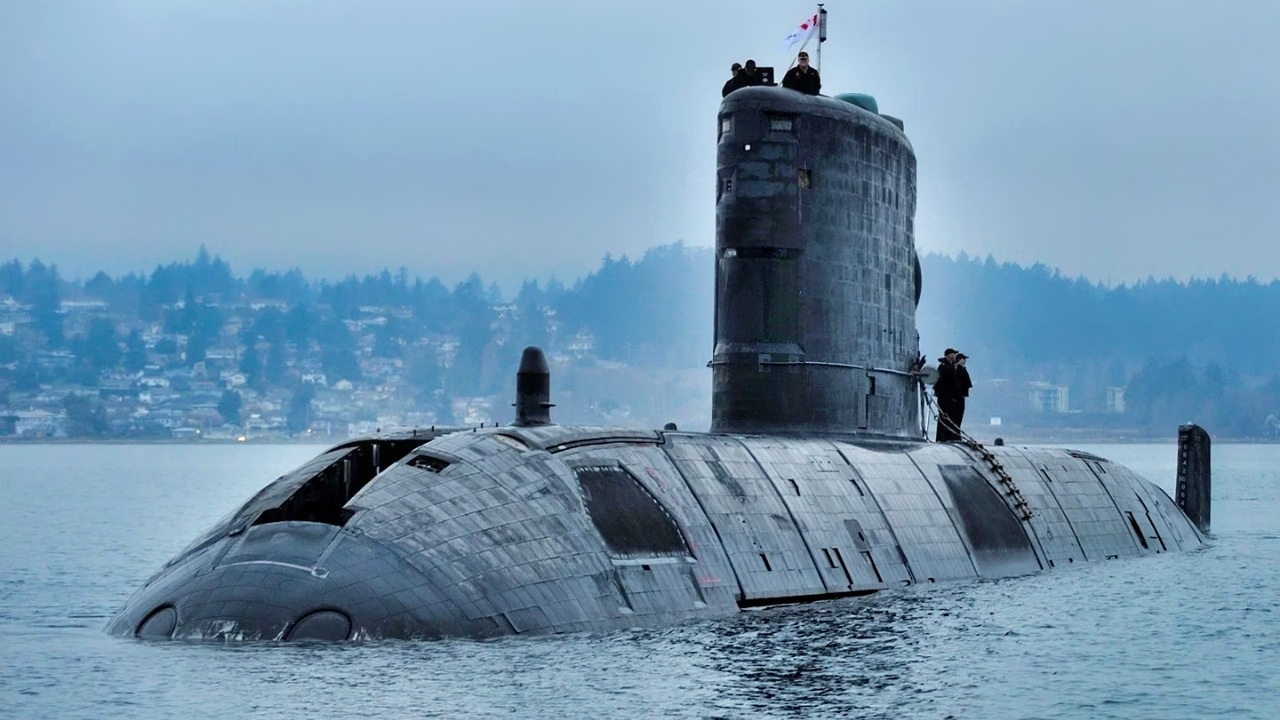Key Points and Summary – Canada’s navy is facing a critical moment as its aging Victoria-class submarine fleet has become a “growing liability.”
-As Russia and China increase their military presence in the contested Arctic, Canada’s outdated and problem-plagued subs are leaving the nation’s sovereignty exposed.

Victoria-Class Submarine Canada Navy. Image Credit: Creative Commons.
-The procurement process for a replacement is “stumbling,” fraught with delays and cost overruns.
-Ottawa is considering options like the Swedish A26 Blekinge-class, but a final decision isn’t expected until 2026, creating a dangerous capability gap at a time of rising global tensions.
The Victoria-Class Submarine Must Be Replaced
Canada’s need to replace its aging submarine fleet has become acute. With a more multipolar international order rising, and as great power competition returns, the Victoria-class submarines of the Royal Canadian Navy are a growing liability. The subs just passed the 25-year mark of service, and they suffer continuing operational limitations and maintenance problems. Upcoming submarine procurement decisions will not only influence the direction of Canada’s future naval capacity, but also will condition the country’s ability to respond to new threats and maintain its sovereignty in important maritime areas.
Canada’s submarine fleet has reached a number of major milestones. The Canadian Submarine Capability Life Extension Project began in late July 2025, representing an important step toward updating the fleet. The purpose of the program was to modernize the Victoria-class submarines and ensure they remain operationally relevant until the mid-2030s.
The Victoria-Class Modernization (VCM) initiative consists of 13 distinct projects that are executed on a unified platform to deliver the essential capabilities required for Canada’s submarines. But the process has been fraught with delays, cost overruns, and issues related to political oversight. Though the government has pledged to supply the Navy with fresh submarines, their delivery schedule has been repeatedly pushed back, and bitter arguments about the nature of the vessels Canada needs continue among defense analysts and policymakers.
A26 Submarine to the Rescue?
Ottawa has reached the early stages of the acquisition process and is considering several valid potential replacements for the Victoria-class. The A26 Blekinge-Class is the favorite candidate. The boat is optimized for moving in shallow waters as well as in the open sea, with its stealth technology and sonar systems. At about 60 meters long and with 1,800 tons of displacement, the submarine is configured for anti-submarine warfare, intelligence collection, and special operations. It can remain submerged for long periods thanks to its air-independent propulsion system, and this is a vital capability in the expansive, chilly waters of northern Canada.
But the A26 is not without its drawbacks. Critics caution that the program’s price could grow beyond current projections and place additional demand on an already stretched defense budget. Integrating new technology and training crews to use complex systems are also significant challenges.
The Royal Canadian Navy faces a perpetual challenge in crewing its vessels, and the deployment of a larger number of submarines that require additional highly trained submariners threatens to exacerbate this problem. The recruitment and training plan must also be an integral aspect of procurement if the Navy wants to ensure that the new submarine fleet can be effectively deployed.
South Korea?
South Korean-built submarines are another possibility. Korean shipbuilders offer advanced submarines with impressive technology, including advanced sonar systems and stealth technology. But whether they are right for Canada and its particular maritime needs remains a pressing question. Designed for the cramped waters around the Korean Peninsula, these submarines may not be suitable for the huge and varied Canadian maritime environment, especially in the Arctic. South Korean patrol boats are unparalleled in anti-submarine warfare but may not support Canada’s need to conduct long-range patrols in remote and frequently harsh environments.
The Path Forward to Replace the Victoria-Class
Looking forward, Canada’s submarine replacement process will carry forward in several stages, culminating with a final government decision somewhere around the middle of 2026. Once a platform is decided upon, contract negotiations with the selected vendor will likely last at least several months. It is hoped that the first boats will enter service in the early 2030s.
The evolving geopolitical environment is itself an important factor shaping Ottawa’s decision. China and Russia, for example, are making huge investments in their navies and positioning themselves to compete in contested areas such as the Arctic.
That region is increasingly a focus of military activity, with sea passages opening up as the climate changes, and precious metals being discovered. Canada would be naive not to act with the utmost urgency to upgrade its naval capabilities in this shifting threat environment. Any failure to quickly acquire and deploy the relevant naval assets – whether these be icebreakers, submarines, or Arctic-capable surface combatants – threatens Canada’s ability to preserve its sovereignty in a region that is increasingly an arena of great-power competition.
In the Indo-Pacific, Canada has agreed to bolster its naval activities alongside other like-minded countries, but will need to upgrade its capabilities. Its frigate hunters, the Victoria-class submarines, are significantly outdated, leaving Canada exposed at a time when maritime power continues to become more important.
What Happens Next?
As Ottawa stumbles its way through the procurement process, it needs to understand that its challenges, while formidable, are not insurmountable. A modern, fully capable submarine fleet is required if Ottawa is to defend the nation’s interests and remain a credible player on the world stage.
The decisions taken in the next few months will define Canada’s navy and its capacity to advance and defend its interests in the North Pacific, the Arctic, and the North Atlantic in the years to come.
About the Author: Dr. Andrew Latham
Andrew Latham is a non-resident fellow at Defense Priorities and a professor of international relations and political theory at Macalester College in Saint Paul, MN. You can follow him on X: @aakatham. He writes a daily column for National Security Journal.
More Military
The U.S. Navy’s Submarine Crisis Is Real











Pingback: 캐나다 신형 잠수함 사업(CPSP) 수주 전략 – 한국해양전략연구소